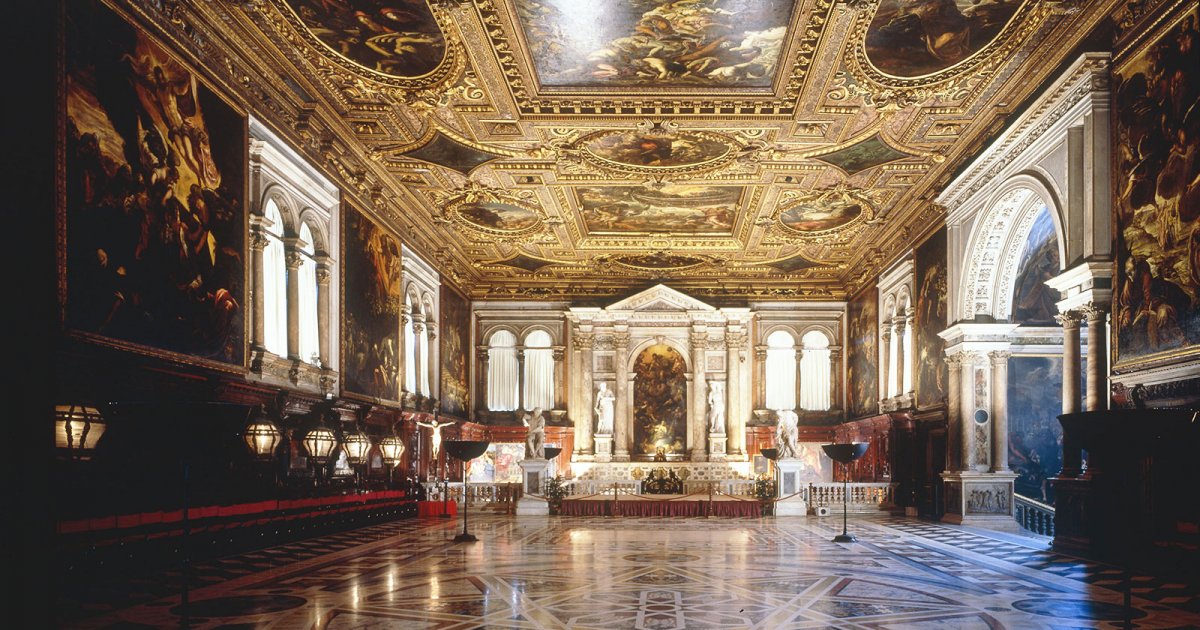SCUOLA GRANDE DI SAN ROCCO, Upper Hall
 Language: English / USA
Language: English / USA
Now you're in the spectacular hall where the School's Council held its meetings. It is one of the most sumptuous Renaissance halls of the city: it's more than 43 meters long, 17 wide, and almost 10 high. It has a clear and airy structure studded with double arch windows and a beautiful floor; at the back, behind a balustrade, you can admire an impressive marble altar. The lights that you see on the sides were carried in procession on ceremonial occasions. But of course the hall is linked to paintings by Tintoretto, who returned to work at the Scuola di San Rocco a decade after having decorated the room you just saw.
First, I suggest a little trick: to observe the works on the ceiling take a mirror with you, otherwise you risk a pretty stiff neck! Keep in mind that the ceiling paintings are dedicated to the episodes of the Old Testament, and the square paintings on the walls are all dedicated to episodes of the Gospel. There are more than thirty works, not to mention the minor inserts, painted over five years: tons of work for Tintoretto and his workshop, if you consider that during the same period he was also involved in the decoration of the Doge's Palace! If you want to see what Tintoretto looked like, go take a look at his self-portrait with a very devout pose that he left to the school.
As you may have noticed, these paintings are united by a great vivacity of movement and by an extraordinary virtuosity in angles and perspectives. The main theme, which is the help that God offers to the faithful, is depicted in three huge paintings on the ceiling, each about 25 square meters. The subjects are taken from the biblical book of Exodus, which tells the journey of the people of Israel following Moses.
FUN FACT: if you're wondering why the palace you're visiting has been dedicated to San Rocco, you should know that the saint, who lived in France at the beginning of the 14th century, devoted himself to helping the sick, and was doing precisely that when he caught the Bubonic plague in Piacenza. So he retired to a forest in the company of his faithful dog, who brought him his necessary food every day, and was treated by an angel there. From that moment on, he became the patron saint of plague victims.



